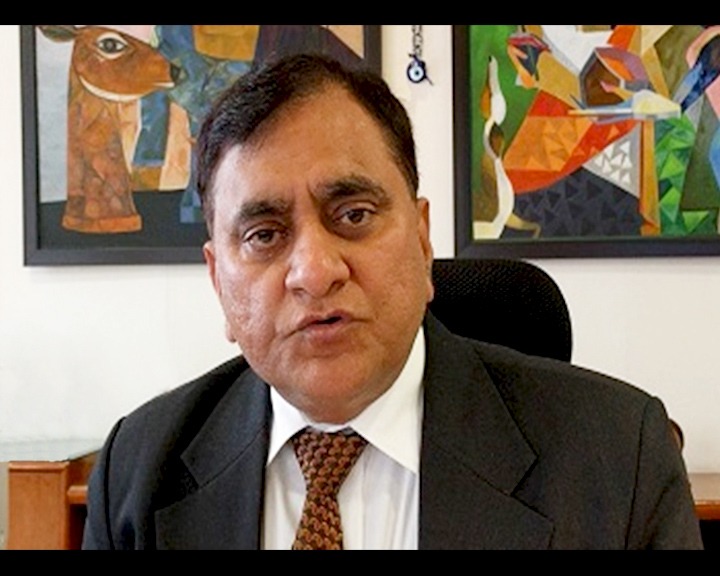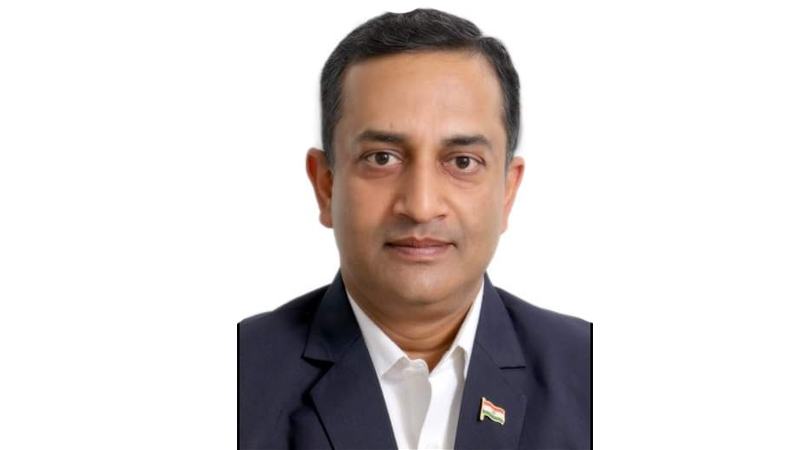Robins Joseph, a Principal Consultant at My Guide 2 Wealth, brings over two decades of expertise to the financial landscape. As a SEBI-registered Investment Advisor (RIA) and Certified Financial Planner (CFP) accredited by the Financial Planning Standards Board, he combines deep industry knowledge with certifications as a NISM-certified Research and Equity Derivatives Analyst. Holding an MBA from SP Jain School of Global Management and a Master’s in Economics, Robins has navigated the equity markets since the 2006 bull run and honed his skills in leading private sector companies throughout his 21-year corporate journey. Through TradeBox, he now offers clients tailored services that cater to a diverse range of investor needs.
In an exclusive conversation with The Interview World, Robins delves into the core principles that investors must prioritize when building portfolios. He outlines optimal strategies for asset allocation, examines distinct investment patterns across age groups in India, and offers practical advice for young investors embarking on their investment journeys. Here are the essential insights from his interview.
Q: Could you elaborate on the key advice you’re currently offering to investors? What critical factors do you believe investors should prioritize to drive sustainable growth?
A: As SEBI-registered investment advisors, our primary responsibility is assessing the client’s risk profile. We thoroughly analyze their risk tolerance and capacity, gauging how much risk they can realistically manage. This foundation allows us to identify and prioritize their financial goals effectively. These goals vary by profile: for a married individual, they often include future needs like children’s education and wedding expenses, buying a home, and, crucially, retirement planning.
In India, however, a significant gap exists in retirement planning. Many prioritize medium-term objectives, such as home purchases and children’s education, while overlooking long-term security. Shifting the focus of individuals, families, and households towards retirement planning is essential. Additional dimensions we address include insurance and tax planning. Equally important is estate planning—particularly the creation of a will, which becomes increasingly vital after age 60.
Q: How do you typically advise clients on portfolio distribution? For instance, if someone is investing Rs. 100, how would you recommend allocating it across different asset classes? Could you walk us through your suggested distribution pattern?
A: Investment strategies should be tailored to each individual’s financial goals and risk tolerance. Let’s break this down for three distinct profiles.
First, consider a 25-year-old with no dependents and financially secure parents. For this individual, an aggressive strategy could work well. We recommend allocating 60-70% to equities, primarily in equity mutual funds, to maximize growth potential. Around 20% can go into debt instruments, such as high-yield bonds or Public Provident Funds (PPF), and the final 10-15% in gold. As advisors, we always stress that gold should represent at least 10-15% of any asset allocation, offering stability and a hedge against inflation.
Next, let’s look at a 40-year-old with a spouse, a home loan, and one or two children. Here, a balanced approach is more appropriate. We advise investing about 50% in equity, 30% in debt instruments, and 10-15% in gold. This blend provides growth while managing risk, keeping in mind the family’s financial obligations.
Finally, for a retiree in their mid-50s to 60s, we suggest focusing on stability and income. Now is the time to begin rebalancing the portfolio, gradually shifting assets from equity into debt to secure a steady, reliable income stream. This conservative allocation helps safeguard their assets while supporting their retirement needs.
Q: How do you view the investment profiles of Indian individuals in today’s digital age? Given the varying priorities across demographics, what are your observations on the investment behaviors of Indian customers—particularly in portfolio investments—ranging from young adults in their 20s to those nearing retirement?
A: Let’s begin with the younger generation, who often represents the weakest link in investment strategy. Many young investors who began post-COVID have only seen a booming market, with the Nifty index climbing from 12,000 to 25,000. They haven’t experienced significant market corrections, and this optimism has led many to overinvest—often 80-90% of their portfolio—in equities, especially in the small and mid-cap segments.
As an advisor, I caution clients of all ages to diversify. For those interested in small and mid-caps, I recommend a cap of 20-30%, with 30% as the upper limit. Younger investors especially should consider debt instruments for stability, spreading risk beyond equities. Another challenge here is lifestyle inflation; rising market returns have led to increased spending, often unchecked. I advise clients to keep their household expenses, after taxes, under 45% of income, while aiming for an investment-to-income ratio between 30% and 60%.
Now, consider the 35-40 age group. Many in this stage struggle to build retirement savings due to high expenses, home loans, and children’s education fees, which drive their investment-to-income ratio below 20%, sometimes even under 10%. This low investment rate creates a substantial gap in their retirement planning, making it challenging to build a sufficient corpus for the future.
For retirees in their 50s, I stress the importance of prioritizing retirement savings over financing children’s education. Children can fund their studies through loans, but a secure retirement can’t be borrowed. Today’s trend is shifting from accumulating non-performing assets like real estate to building continuous wealth that supports a fulfilling retirement. The goal should be to cultivate enduring financial security, allowing retirees to fully experience life on their own terms.
Q: What advice would you offer to the younger generation as they begin their investment journey?
A: For the younger generation, my primary advice is simple: keep investing consistently. Aim to allocate at least 40% of your income to investments. Many young people today embrace a “you only live once” mindset, often prioritizing spending on gadgets, vacations, and dining out. While enjoying life is essential, this approach can disrupt the balance between income and expenses.
If your income supports this lifestyle comfortably, then it’s manageable. But for those earning in the mid to lower income ranges, maintaining financial balance is crucial. Keep spending in check to ensure a healthy ratio between expenses and income, allowing room for meaningful, long-term wealth building.









